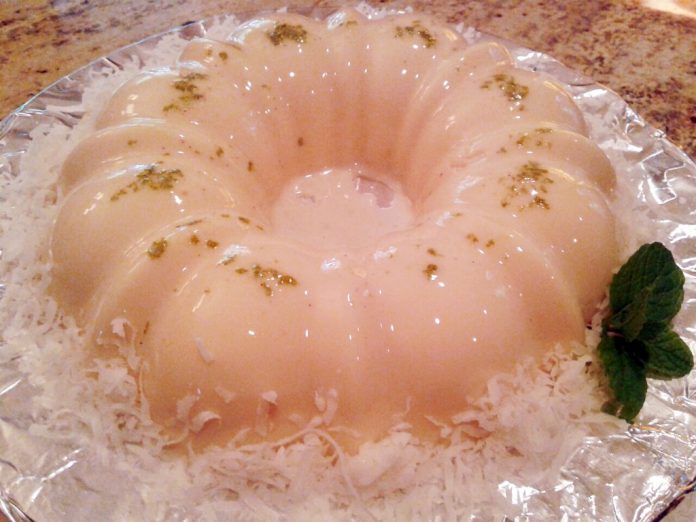Put your honey from the Honey Festival to good use.
By Donna Zitter Bordelon
Have you noticed? There hasn’t been enough vanilla around here lately — at least at a reasonable price. Why?
The island of Madagascar is the world’s largest producer of vanilla beans, which are of crucial importance to the island’s economy. In March 2017, a cyclone destroyed much of that year’s crop. Since it takes three to four years for a new plant to produce vanilla pods, the shortage has resulted in violent robberies and murders, which have been linked to vanilla’s short supply. (Surprise: Not talking about Philadelphia here.) Locals who grow the vanilla plants, brandishing machetes, have been protecting their own fields.
An enslaved boy named Edmond Albius in 1891 invented a way to pollinate the vanilla orchid flower by hand, which made it possible to profitably grow vanilla beans away from their native Mexico, in places like Madagascar. This method is still used today, as almost all pollination is done by hand. Pollination, curing, drying and export take about one year.
The flowers of the vanilla plant bloom just one day a year, and the flowers are fertile only eight to 12 hours after their bloom. Originally, the pollen from the Mexican vanilla orchid flower could be reached only by the small, native Melipona bee, not the larger honey bee.
Did someone mention honey bees? The Ninth Annual Honey Festival will be held this weekend. The buzz begins this Friday, Sept. 7, from 5 to 9 p.m., right here in Northeast Philly at Glen Foerd on the Delaware River, 5001 Grant Ave. It continues on Saturday at Wyck Historic House and Sunday at Bartram’s Garden, both days from 10 a.m. to 4 p.m. All locations will feature honey tastings, open-hive demonstrations, food trucks, children’s activities, vendors, speakers, honey extraction, local honey for sale, bee-bearding demonstrations, and mead and honey beer tastings.
Come to the Honey Festival and learn more about honey bees — those interesting, industrious, fascinating creatures that pollinate our crops and give us honey. The Honey Fest is a free event — fun and informative. For more information, visit Phillyhoneyfest.com
Come see what the buzz is all about, and bring your “honey.”
Blanc Mange, blancmange, or blanc manger, which translated means “white food,” is an old dessert that has been around for centuries. It was a dish prepared with white ingredients, thought to be pure, and was originally a savory rather than a sweet dish. A food popular in France and then in England, it became a sweet, creamy dish in the 19th century, and is now a dessert popular in many Caribbean Islands. The Italian Panna Cotta is a dessert similar to Blanc Mange.
BLANC MANGE
3 packets Knox unflavored gelatin
¾ cup water
1 can evaporated milk (14 oz.)
1 can coconut milk (13.5 oz)
1 can condensed milk (14 oz.)
2 Tbsp. honey
3 Tbsp. rum
1 tsp. vanilla
Pinch of cinnamon
Zest from one-half lime
Garnish: Coconut, almonds, chopped maraschino cherries, or any fruit coulis or fresh fruit
Decorative mold, Bundt pan or individual dessert dishes, oiled
Sprinkle the packets of gelatin over the water. Let stand 1 minute. Stir.
In a large pot, whisk together the coconut milk, condensed milk and evaporated milk over medium heat.
Add the gelatin, cooking and stirring on low just under a simmer, until mixed, and gelatin dissolves.
Add the honey, vanilla, cinnamon and lime zest and stir.
Remove from the heat, and stir in the rum.
Pour mixture into prepared mold(s), and chill for at least 8 hours or overnight.
Unmold by dipping the pan in a warm-water bath for a few seconds, until you see the mold loosen from the sides of the pan. Immediately place a plate over the mold and invert. Garnish.
Eat well, live long, enjoy!
(Questions or tips can be sent to Donna Zitter Bordelon at [email protected] or in care of the Times, 2 Executive Campus, Suite 400, Cherry Hill, NJ 08002)
Don’t forget:
Send in your favorite recipe for a chance to win a $100 ShopRite gift card. Mail your recipe to Readers’ Recipes, 2 Executive Campus, Suite 400, Cherry Hill, NJ 08002. Or email your recipe to [email protected]. Please include name, address and telephone number.





